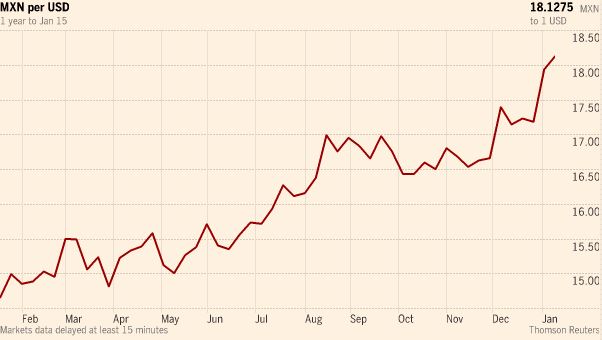MEXICO CITY — Mexico’s peso depreciated early on Wednesday Jan. 20 to touch a historic low of 18.478 pesos per U.S. dollar as further falls in oil prices dragged on global markets.
The exchange rate later appreciated to hit 18.361 pesos per dollar at about 7:16 a.m. local time.
Mexico’s peso slumped 16.8 percent in 2015, the highest annual fall since 2008. So far in 2016 it has fallen about 6.6 percent.
Experts attribute the peso’s continuing fall versus the dollar to investors’ being spooked by the relentless sell-off in oil and heightened anxiety over China.
Although investors see Mexico as one of the few solid markets left that can weather the headwinds facing the global economy (as underscored by the resilience in the country’s bond and equity markets), growing enthusiasm about Latin America’s number two economy is being overshadowed by jitters about the broader emerging markets.
And the peso is bearing the brunt of this panic. As the world’s eighth most-traded currency, the Mexican peso is often used by investors as a proxy for less liquid Emerging Markets currencies. This makes it vulnerable to large sell-offs during times of stress as a hedge against long positions in Emerging Markets.
However, the peso’s weakening is not all bad news for Mexico.
A cheaper currency makes Mexico’s exports (80 per cent of which go to the US) more competitive. It also helps keep the country’s energy bill down (Mexico imports a lot of gasoline and gas from the US). These perceived advantages are probably why the country’s policymakers – for all their warnings about looming currency wars – have so far been happy to let the peso slide.
Sources:


